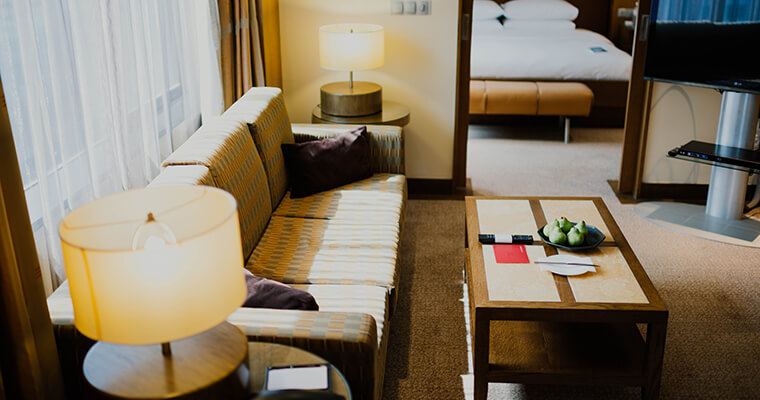Tips for perfect ambient lighting

We hear a lot talked about the ambience of a room. Sometimes it seems a bit mysterious how some rooms have a lovely feel while others simply do not. How can you make sure that your rooms at home have that special cosy and comfortable feel? Well, you can do it in many ways, but one of the most important things to focus on is ambient lighting.
What is ambient lighting?
The reason why ambient lighting is probably the most important kind of lighting for the home is that it will be your primary light source, aside from natural lighting. Ambient lighting is there to act as the foundation to your interior lighting layout. It offers a general, base layer of lighting which should not cause any glare. It should be evenly spread throughout the space.
When you have successfully arranged ambient lighting, you will feel comfortable that you can navigate the space with ease without needing any extra light. On top of that, successful ambient lighting will give the space around you a warm and welcoming feel. If it hits just the right note, then you will effectively be able to bring out the best in your room.
Where to place your ambient lighting?
One of the most crucial things when it comes to planning your ambient lighting is working out where exactly to place your lights. The way to do this is to turn off any lights in the room in question when there are low levels of natural light coming in from the windows. You will then be able to make a note of which areas of the room are still being lit by that small amount of natural light, and which areas are being plunged into darkness. This will inform your decision when it comes to installing the lights, as it means you can place with a higher frequency in those areas which lose light more quickly.
The key word with all of this is balance. You will need to make sure that the lights you have arranged around the room add up to a balanced ambient light. This does not simply mean placing identical lamps in each corner of the room, as this might lead instead to a room which is too bright. Instead, you should think about playing around with different styles of lighting which in combination will provide just the right level.
Examples of ambient lighting
You can then begin to have fun thinking about which types of lights to set in place. You might want to consider for example recessed lights, nightlights, lamps, or track lights. There are also pendant lights, LED chandelier lights, wall or ceiling lights to bear in mind. The intensity of the light will depend on the type of the type of room and the function that you would like the ambient lighting to have.
As mentioned above, it should never be too powerful, as it is essentially going to be a general light, rather than a more condensed reading light or work surface light. This is in the sense that you should always be able to have accent lighting cut through the ambient lighting. At the same time, you need to know that the ambient lighting is ample enough to serve as the main, general source of light in whichever space it is that you are focusing on.